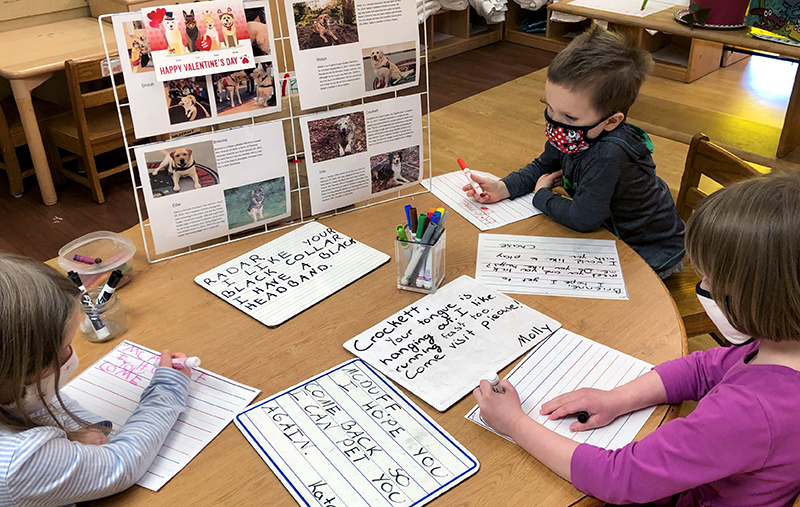This past year was a whirlwind, catching all by surprise; preschool children used letter writing to communicate, make sense of their surroundings, and share messages with family and friends. Half of the children came back to school in late June while the other half returned in early August. To comply with COVID-19 recommendations and guidelines, a partition was placed in the center of the classroom. With the partition up, children became concerned how they would communicate with friends and teachers on the other side while not “sharing” their germs. Writing letters was the perfect answer to this question. Teachers placed “mailboxes” near the shared bathroom where the children placed their letters. At the end of the day, each side of the classroom checked the mail and prepared return letters the next day. Letters across the partition quickly transitioned into notes sharing ideas and feelings that were put on cubbies or handed directly to friends.
As the school year progressed, children used letter writing to share message with friends and family; with the world shut down, an emphasis of returning to old ways of communication became more of a focus instead of the use of technology. Teachers introduced the parts of a letter to children, focusing on the recipient and sender along with developing a letter with a beginning, middle and end. During reading groups, teachers often re-tell stories focusing on the parts of a story so the concept was familiar to children. Valentine’s Day became the perfect opportunity for the class to continue letter writing, learning how to label an envelope, and adding a “stamp” so it could be sent in the mail.
Buckeye Paws, the OSU Wexner Medical Center’s certified therapy dogs, visited the A. Sophie Rogers School and after the visit, the children wanted to write to the dogs to let them know how much they appreciated the visit. McDuff and Shiloh, the Buckeye Paws dogs, were showered in letters and pictures. When teachers displayed the biographies of the other dogs in the program who did not come to visit, the children began to write to the dogs to tell them more about themselves and let them know how much they wanted them to visit. Children worked closely with one another and teachers to develop and mail their own biographies to the Buckeye Paws dogs so that the dogs could learn about them, too.
By offering novel writing tools and paper at the writing table, children were eager to continue their letter writing. Different pens, pencils, markers and crayons require various pressure to get the marks to show on the page. Plain paper, stationary or sticky notes require different spacing and writing plans to make the whole message fit on the page. Varying materials offered daily and weekly at the table supported and continued this letter writing process.
When developing curriculum, teachers keep in mind Ohio’s Early Learning and Development standards. The letter writing exploration meets many of those standards under the Language and Literacy domain, targeting topics under all three strands (Listening & Speaking, Reading, and Writing). Children gained experience developing complex concepts and expanding sentences, along with recognizing familiar words, letters, and sounds within their messages. Children often added visual details to their letters to aid their verbal descriptions, using both words and images as means to communicate their thoughts, ideas, and personal details.
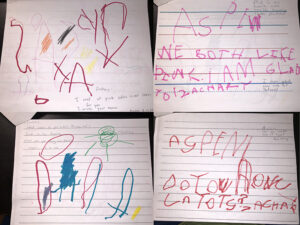
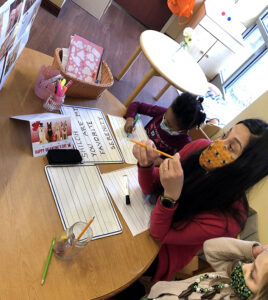
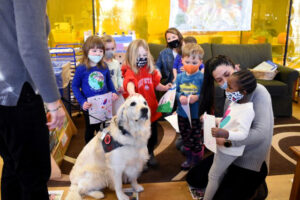
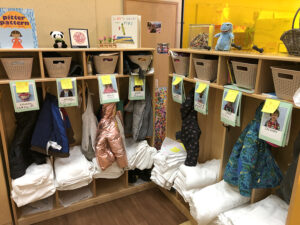
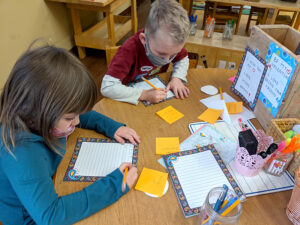

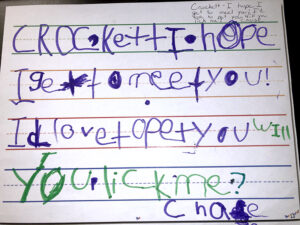
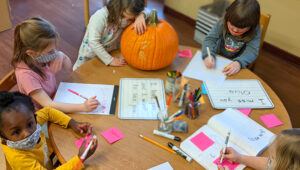
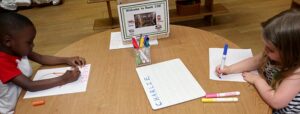
Click an image to enlarge.

